How to stamp out jargon, eliminate corporate speak and sound like a real person
One of my pet peeves – business messaging full of jargon and corporate speak. No one actually talks like that, do they? Well, perhaps a few people do, but many still write that way. How much of the audience understands it? Writing and speaking in plain English or layman’s terms can help.
Wikipedia defines plain English as communication that emphasizes clarity, brevity and the avoidance of technical language. This particularly applies to business communications.
I recall many heated discussions (aka arguments!) with colleagues on this topic. Many stated that our audience – employees, customers, consumers – is very well-educated, and they didn’t want to dumb down their content or message.
One of my favorite rebuttals to this line of thinking is to remind corporate-speak advocates that many of the most famous and memorable speeches were written at a 10th grade reading level or below. Dr. King’s “I have a dream” speech. Lincoln's Gettysburg Address. Kennedy's inaugural speech. Each of these is instantly recognizable and frequently quoted. While these works contain big words and complex ideas, King, Lincoln and Kennedy chose their words carefully and spoke plainly. They wanted the average American to understand and be inspired by their ideas and message and not marvel at big words they didn’t understand.
“…plain English that emphasizes clarity, brevity, and
the avoidance of technical language…”
If plain English works, why is it so rare?
Many are simply afraid they might sound unprofessional if they write or speak in a simple, conversational style. Others want to bury bad news, such as employee layoffs or overblown executive compensation packages, in an incomprehensible message.
A classic example is the 2014 jargon-filled employee email from former Microsoft executive Stephen Elops. For the first 10 paragraphs, he rambles on and on about business challenges and Microsoft’s new strategy. Finally he gets around to the punch line – a punch in the gut to the 12,500 of you won’t be around to see this new strategy come to life! Classy and caring, right?
The problem of jargon in writing got so bad that Congress felt it had to get involved and passed the Plain Writing Act of 2010. My first exposure this Act happened when I was asked to edit the executive compensation section of an annual 10-K report. Why ask the director of communications to edit the 10-K? The Securities and Exchange Commission (SEC) published a handbook in 1998 on how to create clear SEC disclosure documents. But the accounting and legal departments continued to write for other accountants and lawyers. Lots of gobbledygook. Time to call in the communication team to help!
How do we fix it? Simple. Write with a specific person in mind.
While writing in plain English has become more common, the SEC’s handbook is still applicable and a good resource. Warren Buffet’s preface to the handbook is timeless advice.
“Write with a specific person in mind. When writing Berkshire Hathaway’s annual report, I pretend that I’m talking to my sisters. I have no trouble picturing them: Though highly intelligent, they are not experts in accounting or finance. They will understand plain English, but jargon may puzzle them.”
–Warren Buffet
We must do the same. Everyone from corporate executives to marketers to bloggers needs to get to know their audience first – before they start writing. While there are other tricks to writing in plain English, this is the most important one if you want to inform, persuade and inspire people.
If you still use “corporate speak,” when do you use it and when do you turn it off? Who do you imagine as your audience when you are writing? I’d love to know.
What is your favorite example of corporate speak – an email, advertisement or video? Send them my way – I could use a good laugh!
Resources:
- How Microsoft Mangled a Layoff Memo, CNBC guest contributor, Marie G. McIntrye @officecoach
- A Plain English Handbook: How to create clear SEC disclosure documents, Office of Investor Education and Assistance, U.S. Securities and Exchange Commission August 1998
- How to write clearly using plain English, Know How Nonprofit

